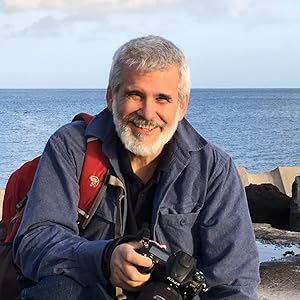
Bob Dennis
关于作者
Bob Dennis is a scientist, engineer, inventor and retired volunteer fire fighter living in North Carolina. Born in Highland Park, Michigan in 1963, he spent 22 years of his early adulthood in Ann Arbor until he moved to North Carolina in 2004. He holds a degree in mechanical engineering, two master's degrees, and a Ph.D. in Biomedical Engineering. Bob is a tenured professor of Biomedical Engineering in the School of Medicine at the University of North Carolina, with a joint academic appointment at NC State. He began his academic career at the University of Michigan on the faculties of Mechanical Engineering, Biomedical Engineering and the Department of Surgery, with a research laboratory in the Institute of Gerontology. He has also been a Visiting Research Scientist at Harvard and MIT. His primary research interests are biomedical instrumentation design and tissue engineering. Lots of details to follow..... As a visiting Research Scientist in the Harvard-MIT Health Sciences and Technology (HST) Program, Bob also co-founded the Biomechatronics Group in the Artificial Intelligence Laboratory at MIT with Hugh Herr. He has also founded several biomedical companies, including Cortical Metrics LLC (co-founded with Mark Tommerdahl) and Micro-Pulse LLC. Bob was elected Fire Chief and served for three years as Chief of the New Hope Volunteer Fire Department in Orange County, NC. Until his retirement in 2009, Bob was a fully-certified structural and wild-land firefighter, as well as a medical first responder and a certified Technical Rescue Technician Bob has been a technical consultant for approximately 60 industrial, aerospace, and biomedical companies, NASA, and several independent laboratories. He has been a defense contractor for the US Army, Air force, Navy and DARPA. He currently owns and operates his own private scientific R&D laboratory in a not-so-secret location in Chapel Hill, NC. Originally designing electro-mechanical components for the automotive industry, he went on to do research and development work for Hughes Aircraft Company during the Cold War, designing missile guidance system components for kinetic energy weapons in the so-called "Star Wars" program. Bob's main academic research was in Tissue Engineering, involving about a dozen sub-fields of that discipline, including skeletal muscle, cardiac muscle, smooth muscle, tendon, vascular, and neural tissue engineering. He has published about 60 scientific papers, more than a dozen book chapters, and holds several dozen U.S. and international patents in these areas and others. He had a short stint (3 years) as a chairman of an academic department (Applied Sciences and Engineering) until he discovered his severe allergies to bureaucrats and administrivia, but he still enjoys teaches university-level courses in Tissue Engineering and Embedded Design. His published work includes more than a dozen first demonstrations in the field of Tissue Engineering, including the first functional nerve-muscle construct grown in culture, the first functional cardiac ventricle that could generate pulsatile pressure in culture, and the first bio-hybrid swimming robot using living muscle tissue for power and a microcontroller with an infra-red data link as a brain. The first two projects were done mostly by his students and post-docs in his laboratory at UM, the latter project was done by Bob in his lab with Hugh Herr at MIT over the course of two all-nighters, on a bet that it couldn't be done. Bob's current research interests include the use of PEMF (Pulsed Electro-Magnetic Fields) for use in medical and industrial applications, primarily the reduction of inflammation, chronic pain, and modulation of the viscosity of colloidal biofluids. Bob and his colleague Mark Tommerdahl host the extemporaneous video show Grumpy Scientist on YouTube, posted irregularly and usually after significant irritation from academic peers.
阅读完整简历书籍
亚马逊音乐
畅听海量歌曲亚马逊广告
吸引买家
无论他们身在何处
消磨时光6pm
对时尚品牌
进行评分AbeBooks
图书、艺术
和收藏品ACX
有声读物出版
轻松实现我要开店
启动卖家账户Veeqo
运输软件
库存管理
亚马逊企业采购商城
您的企业
所需的一切亚马逊海外购
配送订单
国际亚马逊云科技
可扩展云
计算服务Audible
下载
有声读物Box Office Mojo
查找电影
票房数据Goodreads
电子书评论
和建议IMDb
电影、电视
和名人








